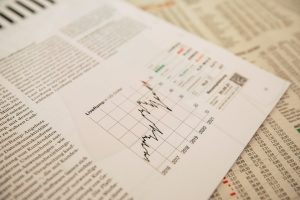Forex trading is a dynamic and ever-evolving market that is constantly changing in response to various economic, political, and social factors. As a result, traders need to have a thorough understanding of the different patterns and trends that occur in the forex market to be successful. One of the most common patterns that traders encounter is when the forex pattern moves sideways, also known as a consolidation phase.
A consolidation phase occurs when the price of a currency pair moves within a relatively narrow range over an extended period. During this time, the market is said to be in a state of equilibrium, with neither buyers nor sellers having the upper hand. This period of price stability is often characterized by low trading volumes, as traders wait for a breakout in either direction before taking action.
The duration of a consolidation phase can vary widely, ranging from a few hours to several weeks or even months. The length of the consolidation phase often depends on the strength of the underlying trend, with stronger trends typically resulting in longer consolidation periods. In some cases, the consolidation phase may be followed by a continuation of the underlying trend, while in other cases, it may signal a reversal in the trend.
There are several factors that can contribute to the onset of a consolidation phase. One of the most common is a lack of new information or market-moving events. When there are no significant economic releases or political developments, traders may adopt a wait-and-see approach, leading to a reduction in trading activity and the formation of a consolidation phase.
Another factor that can contribute to a consolidation phase is a lack of market liquidity. When trading volumes are low, it can be difficult for buyers and sellers to find the necessary counterparties to execute trades. This can lead to a narrowing of the bid-ask spread and a reduction in price volatility, resulting in a consolidation phase.
Finally, a consolidation phase can also occur as a result of technical factors. For example, a key resistance or support level may be preventing the price from moving in one direction or the other, leading to a period of consolidation as traders wait for a breakout.
Regardless of the cause, traders need to be able to identify and respond to consolidation phases in order to be successful in the forex market. One strategy that traders often employ during consolidation phases is range trading. Range trading involves buying the currency pair at the lower end of the consolidation range and selling it at the upper end, with the expectation that the price will continue to move within the range.
Another strategy that traders may use is to wait for a breakout in either direction before taking action. This can involve setting stop-loss orders above or below the consolidation range to limit potential losses in the event that the breakout does not occur.
In conclusion, a consolidation phase is a common pattern that occurs in the forex market when the price of a currency pair moves within a relatively narrow range over an extended period. This period of price stability can be caused by a lack of market-moving events, low trading volumes, or technical factors. Traders need to be able to identify and respond to consolidation phases in order to be successful in the forex market, using strategies such as range trading or waiting for a breakout in either direction.






